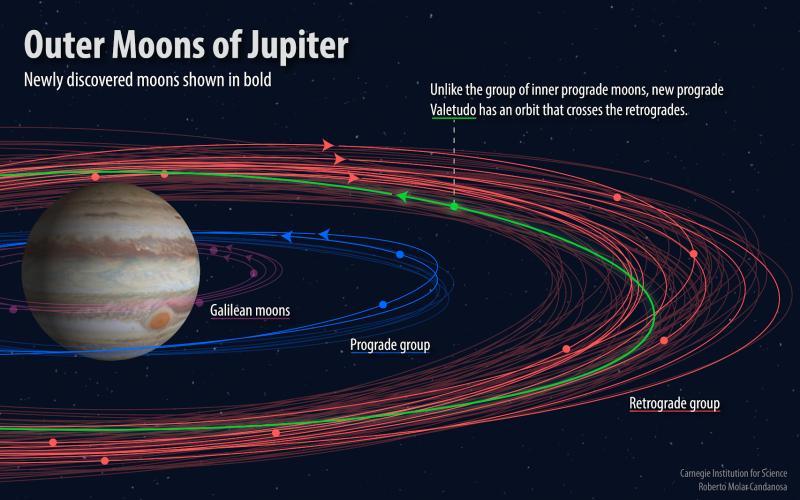Amateur Astronomer Discovers New Moon Orbiting Jupiter
Kai Ly spotted the unnamed satellite using telescope images from 2003
/https://tf-cmsv2-smithsonianmag-media.s3.amazonaws.com/filer/62/56/62564a25-d5f9-4964-a1be-582284ddafa9/4479811906_930369a7c9_o.jpg)
Amateur astronomer Kai Ly is on a roll. They rediscovered four “lost” Jupiter moons last year. Now, Ly has located a previously unknown moon orbiting the biggest planet in our solar system.
“I’m proud to say that this is the first planetary moon discovered by an amateur astronomer!” they posted June 30 in a message at the Minor Planet Mailing List (MPML), an online community of the world’s leading amateur astronomers.
Using old telescope images, Ly was able spot the unnamed satellite orbiting Jupiter, which is nearly 385 million miles from Earth. The distant planet has at least 79 moons—now 80—some so small and indistinct they can only be detected by a large telescope one month of the year. (Ly posted their data visuals in Imgur.)
EJc0061 imagesTo locate this satellite, Ly scoured images taken by the Canada-France-Hawaii Telescope in 2003, reports Jeff Hecht of Sky & Telescope. This dataset was the same one they used to find the four “lost” moons last year. The barely discernable satellites disappeared from view until Ly was able replot their trajectories and identify them on the images.
The amateur astronomer found the missing moons in the Carme cluster, a group of 22 space rocks with similar orbits, reports Doris Elin Urrutia at Space.com. With an average radius of 14 miles, Carme is the largest of these satellites, which NASA scientists suspect was an asteroid that broke apart into smaller parts.
This group is also where the new moon was found. (The finding was submitted to scientific journals, but has not yet been published.) Ly observed an object originally spotted by NASA in 2003 and thought it was a satellite. Ly calculated its 22-day arc using data from another observatory, the Subaru Telescope, to verify the object was in fact a moon orbiting Jupiter, reports Aubrey Clarke for The Science Times.

“In the end, I measured a total of 76 observations spanning an arc of 15.26 years (5,575 days),” Ly writes in the MPML message. “The orbit of this Jovian moon is now well-secured for decades to come, so I hereby present to you: Jupiter’s 80th moon, EJc0061 = S/2003 J 24 (provisional designation pending)!”
Another amateur stargazer Sam Deen tells is “quite impressed” with Ly’s discovery, which was made possible because observatories post data online for everyone to see and use. “The main obstacle is just getting to know what you’re doing and having the tolerance to go looking through the data for hours before turning up anything worthwhile,” Deen tells Sky & Telescope.
Ly describes their search as “a summer hobby before I return to school,” they tell Sky & Telescope. They plan to review more images in hopes of making another discovery.
“I will continue my hunt for unidentified Jovian moons in the February 2003 dataset, so stay tuned for additional Jovian moon discoveries by me in the next coming months!” Ly writes at MPML.
/https://tf-cmsv2-smithsonianmag-media.s3.amazonaws.com/accounts/headshot/dave.png)
/https://tf-cmsv2-smithsonianmag-media.s3.amazonaws.com/accounts/headshot/dave.png)